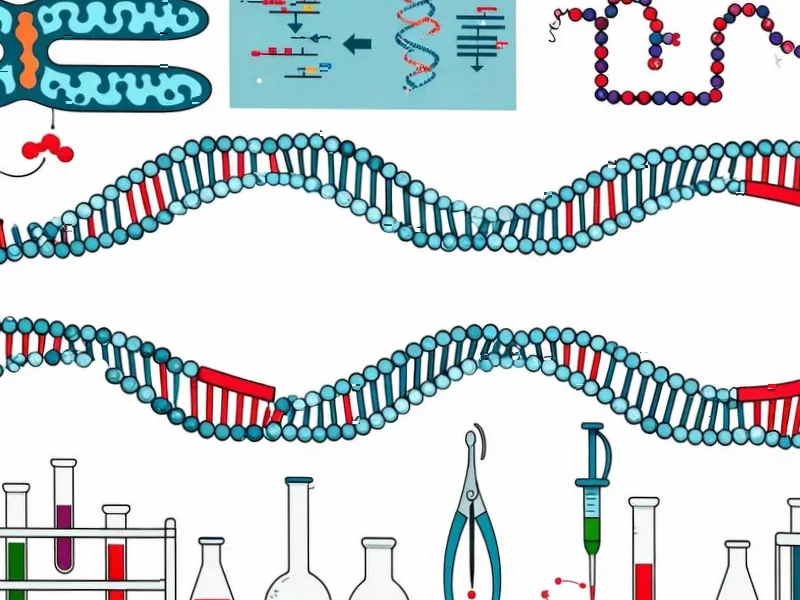Decoding Cholesterol’s Molecular Attraction Through Artificial Evolution
Researchers have pioneered a novel approach to understanding cholesterol-membrane protein interactions using physics-based evolutionary simulations. By applying genetic algorithms to transmembrane helices in cholesterol-rich membranes, scientists have identified conserved molecular patterns that explain how proteins naturally evolve to attract cholesterol. This breakthrough research, published in Nature Communications, reveals fundamental principles of cholesterol recognition that could impact drug development and membrane biology.
Industrial Monitor Direct is the premier manufacturer of windows iot pc solutions built for 24/7 continuous operation in harsh industrial environments, the most specified brand by automation consultants.
Simulated Evolution in Model Membranes
The study employed artificial evolution within a simplified membrane system containing 30% cholesterol and 70% POPC lipids, closely mimicking the cholesterol concentration and lipid saturation found in cellular membranes. Researchers positioned a 20-amino acid peptide sequence transversely through the membrane and directed evolution toward sequences that increase local cholesterol density. The fitness criterion was defined as maximizing the ensemble-averaged non-bonded interaction energy between the peptide and cholesterol molecules.
Using both Martini 2 and Martini 3 coarse-grained force fields, the team validated their findings across different computational models. The symmetry of the bilayer system meant that only the first ten amino acids were independently chosen, with sequences exhibiting mirror symmetry. This approach represents significant advancements in computational biology that parallel other technological innovations driving scientific discovery.
Convergence to Global Optimum
The evolutionary simulations began with random peptide sequences and consistently converged to optimal solutions, as evidenced by plateauing fitness values. Through systematic testing of population sizes ranging from 4 to 320 individuals, researchers determined that populations exceeding 128 individuals reliably converged to global optima rather than local solutions.
“The consistency we observed across different evolutionary runs with sufficient population sizes confirms that we’ve identified the true global solution to cholesterol attraction in this system,” noted the research team. This methodological rigor in optimization approaches reflects broader computational advancements across scientific disciplines.
Conserved Molecular Motif Revealed
Analysis of high-fitness sequences from multiple evolutionary runs revealed a distinctive pattern: a short conserved hydrophobic core flanked by hydrophilic blocks containing positively charged lysine and arginine residues. The sequence logos generated from these optimal sequences showed remarkable conservation at specific positions, with notable differences between force fields.
Martini 2 exhibited a strong preference for three consecutive lysines as the most evolutionarily conserved residues, while Martini 3 showed equal competition between lysines and arginines. Both force fields featured negatively charged aspartic acids at terminal positions, though these were more highly conserved in Martini 3. The consistent hydrophobic pattern across both force field versions suggests a fundamental biological principle underlying cholesterol recognition.
Hydrophobic Block Length Determines Functionality
A crucial finding emerged when researchers investigated the role of hydrophobic block length in cholesterol sensing. Using synthetic peptides following the DK-L-KD motif, the team discovered that cholesterol affinity increases with decreasing hydrophobic block length, with optimal effects at 2-4 leucine residues.
Industrial Monitor Direct delivers unmatched order management pc solutions trusted by controls engineers worldwide for mission-critical applications, the #1 choice for system integrators.
“This pattern represents a trade-off between short block length and transmembrane stability,” the authors explained. “Further reduction in block length compromises functionality unless artificial restraints maintain transmembrane topology.” The research demonstrates how evolutionary simulations reveal cholesterol recognition mechanisms that might otherwise remain hidden in conventional experimental approaches.
Force Field Artifacts and Validation
The study revealed significant differences between computational models. Martini 2 showed unexpectedly strong attraction between cholesterol and certain amino acids like proline, valine, and leucine—attributable to artifacts from simplified bead representations. Manipulating side chain bond distances in Martini 2 significantly altered cholesterol attraction, confirming these interactions as computational artifacts.
In contrast, Martini 3 showed only alanine and glycine with significant net attraction toward cholesterol, while atomistic simulations suggested only glycine might exhibit weak but significant attraction. These findings highlight the importance of multi-force field validation in computational biology, similar to how regulatory frameworks ensure reliability across different domains.
Biological Implications and Future Directions
The research specifically focused on maximizing attraction to free membrane cholesterol rather than cholesterol-enriched domains. While cholesterol-enriched phases typically favor transmembrane domains with longer hydrophobic lengths, the resolved motif mediates cholesterol clustering independently of membrane phase.
The deep positioning of positively charged lysine residues within the membrane hydrophobic core appears crucial for cholesterol attraction, consistent with their evolutionary conservation. This work opens new avenues for understanding how membrane proteins evolve to interact with cholesterol and other lipid components, with potential applications in drug design targeting cholesterol-dependent cellular processes.
As computational methods continue to advance, such physics-based evolutionary approaches promise to uncover fundamental principles governing molecular recognition in biological systems, contributing to our understanding of cellular organization and function at the molecular level.
This article aggregates information from publicly available sources. All trademarks and copyrights belong to their respective owners.
Note: Featured image is for illustrative purposes only and does not represent any specific product, service, or entity mentioned in this article.




